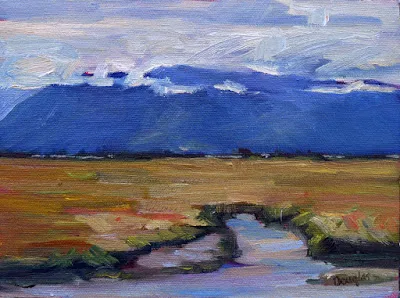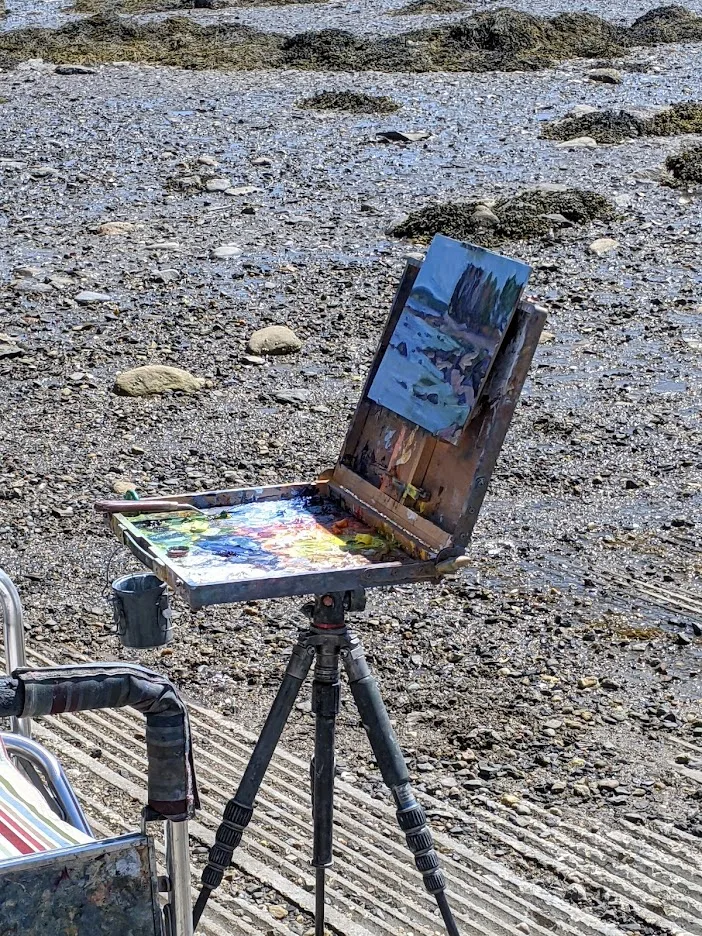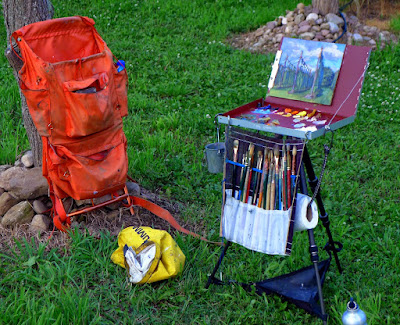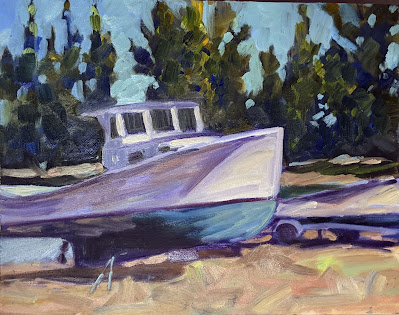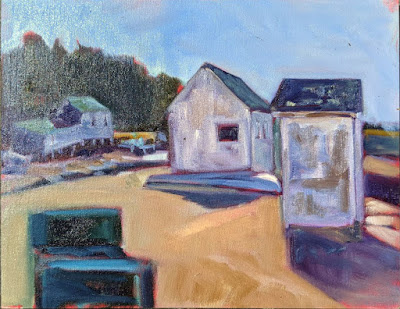To paint trees, you need to understand them. That doesn’t mean you need to memorize species, but you do need to be able to spot the differences.
 |
| Palm, by Carol L. Douglas, available. |
When I first posted this back in 2018, I wrote, “There is a major division in the forest world between conifers (the trees with needles) and broadleaf trees.” I should have added a third class of trees—the palms, since there are 2,600 known species, generally in the tropics and sub-tropics.
Palms are distinguished by their large, compound, evergreen leaves, called fronds, which are arranged at the top of an unbranched stem. Most (but not all) conifers are evergreens; the biggest exception being the larches, which turn a delicious yellow-gold in autumn. Broadleaf trees are always deciduous in the north, but not in the south. Every landscape has a combination of deciduous and conifer trees, but palms grow only in the tropics and subtropics and conifers dominate in the far north. Which are dominant in your landscape? In the Pine Tree State, the distribution of conifers to deciduous trees is about 50/50.
That matters even if the trees in your painting are not much more than silhouettes, because different types of trees have different shapes and traps (sky-holes).
 |
| Old Bones, by Carol L. Douglas, available. |
For broadleaf trees, the most important distinguishing characteristic is the branching pattern, which defines the shape of its canopy. Silver maples are large trees with open, vase-like canopies. Oaks have large spreading crowns; beeches have similar crowns that appear to have melted. Most broadleaf trees branch alternately but maple, ash, dogwood and horse chestnut branch in opposite pairs. Here’s a tip: whatever pattern the twigs have, the major branches will also have.
 |
| Watercolor study of the branching pattern of a live oak, which can seem pretty inscrutable to a Northerner. |
Pines have fewer branches than spruces or firs, and their branches grow in circular whorls on the trunk. As they age, they develop an open, jagged canopy. Spruce branches grow in an upturned direction; as youngsters, they look the most like ‘Christmas trees’. In their dotage, they turn a fine, weathered figure to the wind. Firs have wide lower branches and a downcast mien. Notably, their cones point upward.
The beginning artist usually errs in drawing trees in two dimensions, as if they only branched on two sides. In fact, there will be branches coming straight at you and straight away. Perspective is muddied by the diminishing size of branches as they arc toward you. The only solution is to draw carefuly and check angles.
Conifers are most easily identified by their needles. Pine needles grow in clusters of two, (red pines), three (yellow pines), or five (white pines), held onto the stem with a tiny papery wrapper. Spruce needles are short, stiff and grow individually from twigs. Fir needles are soft and flat. Cedars have flat, scale-like leaves and stringy bark. Junipers (including, confusingly, the Eastern Red Cedar) have berrylike, bluish cones on the tips of their shoots.
Many people can identify the common broadleaf trees by their leaves, and I’ve included a chart to help you. It’s more important to see and understand the differences in color. Silver maples have a lovely grey-silver color. Sycamores are garbed in military-fatigue green. Black spruces are dark while Eastern White Pines are fair and soft in their coloring. This is why I discourage my students from using tube greens and encourage them, instead, to mix a matrix of green colors.
The sycamore is a successful urban tree because it’s pollution-resistant. It has peeling, multicolored bark. Maples are grey and deeply grooved in maturity. Oak bark is dark. Cherry has a lovely red, shiny bark in its youth, but becomes furrowed and grey with age, like most of the rest of us. Only beeches maintain their smooth skin into great old age.
 |
| Spruces and pines on the Barnum Brook Trail, by Carol L. Douglas |
Too often, we painters ignore young trees. Young trees often look radically different from their aged ancestors, but they have a beauty of their own.
To be a convincing painter, you don’t need to memorize tree species, but you do need to learn to distinguish between them. Any plausible landscape will contain a variety of them, with different bark, branch structures, and leaf colors.




